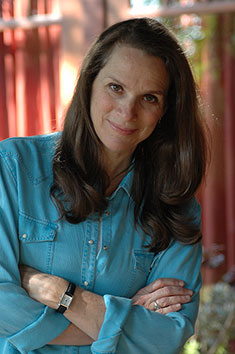It used to be that babies and pregnancy just happened. The doctor was there to monitor things, and he or she made an appearance at the decisive moment, intervening during the birth process, if at all. Even a decade ago, natural childbirth was the rage. Now, the laying of hands atop a pregnant belly seems to have been superseded by the laying on of ultrasound-conducting jelly, probing needles or fetal monitoring belts.
High-risk pregnancies--involving mothers-to-be older than 35, couples with known genetic risks or a previous malformed child, women with medical problems or histories of miscarriage, and those whose tests indicate medical anomalies--can be monitored through technology unavailable a decade ago. Fetuses that would not have survived are born healthy now because doctors can judge when and how to deliver, and arrange for pediatric surgeons to be in the delivery room, ready to perform immediate procedures. Some surgical remedies can even be done in utero , although so far these are few and rarely indicated.
Doctors no longer simply ask, "Should we intervene in this pregnancy?" Instead, they focus on the questions of when and to what degree, particularly as the "high-risk" rubric seems to envelop a growing number of women. Even though the vast majority of pregnant women deliver healthy babies, more and more doctors are on the lookout for problems; peer pressure, malpractice fears and increasingly available technology are making intervention--from testing to selective termination--the norm rather than the exception. In the past 10 years, the number of women choosing prenatal testing has tripled.
Clinician, teacher, researcher, Khalil Mohammed-Ali Tabsh, 42, plows through this world like a combination high-tech wizard and the Lone Ranger.
"I'd place him among the top five or six people in the country in maternal-fetal medicine," says Nicholas Assali, a founding father in the field of fetal physiology and recently retired professor of obstetrics from the UCLA medical school. "I'll tell you this--he does not know what the word tired means."
Tabsh delivers about 100 babies and estimates that he performs about 1,000 ultrasounds and 500 amniocenteses annually, a high volume dictated by his specialty and his reputation. In addition, he is frequently called in as a consultant in emergency deliveries or complicated pregnancies at Santa Monica, Olive View, Northridge and UCLA hospitals. And he is continuing his research into the fetal lung development of twins and offering advanced training in high-risk obstetrics.
"He's a Renaissance man," says his boss, Roy Pitkin, chairman of obstetrics and gynecology at the UCLA School of Medicine, a highly respected figure in the field of maternal-fetal medicine who appointed Tabsh to the faculty in January. "Few people in this field are able to span the distance from research to teaching to patient care. And I must tell you, I don't know that I've ever seen anyone with such devoted followers, from students to senior faculty colleagues. There is seemingly something charismatic about the guy."
Tabsh, a master of the prenatal armamentarium, is considered a doctor of choice by patients and peers. Although many physicians perform ultrasound and amniocentesis, he is one of a select number of doctors authorized by the state to conduct the tests as part of its prenatal screening program, the only one of its kind in the nation. He was also one of the first doctors in Los Angeles to receive federal approval for pioneering the use of chorionic villi sampling, genetic testing of the placenta at nine to 11 weeks. For his part, Tabsh ascribes his talent to luck. "I'm good with my hands," he says. Peers say his ability to extrapolate three-dimensional images from the fuzzy TV pictures produced during ultrasound is exceptional.
Tabsh's technical skill often translates into an aggressive pursuit of the avant garde. He is something of an obstetrical cowboy, riding the wild frontier of medicine, experimenting with the uses of technology to save lives that would almost certainly be lost if he limited himself to traditional approaches. Medically acceptable protocols allow for such innovation; Tabsh develops possibilities that rules and guidelines will only later stretch to cover (see related story, opposite).
Most obstetricians monitor a fetus's condition with "non-stress" tests, stimulating the fetus and then asking the mother to report its response. But Tabsh applies a less commonly used but more sophisticated and invasive measure: He draws blood samples from the umbilical vein to determine how much oxygen is reaching the fetus.



